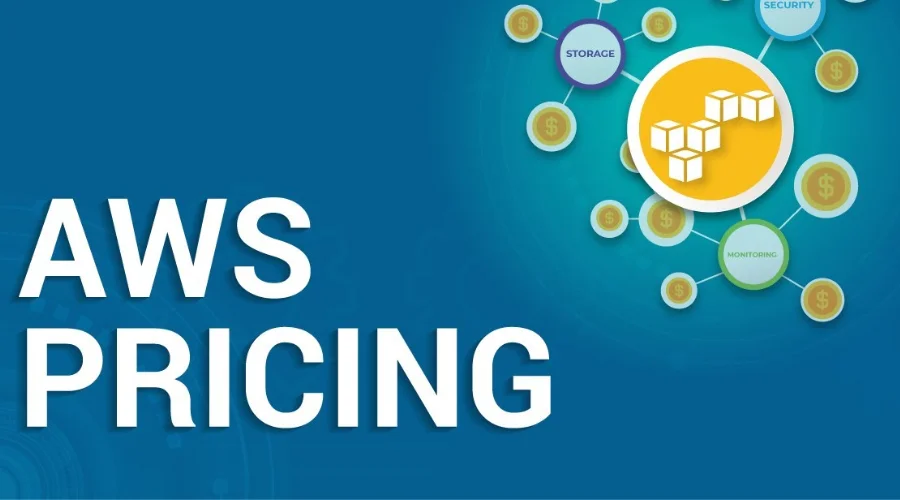AWS courses offered by Datacamp! Whether you are just starting with AWS courses or looking for ways to improve your skills, Datacamp has many learning options available. This blog post will provide a comprehensive overview of the different types of courses, their cost, availability, and some helpful tips on how to get the most out of them. We’ll also discuss what makes Datacamp stand out from other educational platforms and why it’s worth considering if you’re serious about mastering AWS. So let’s dive in and explore all the AWS courses Datacamp has to offer, including the AWS free course!
Amazon Web Services (AWS) is a cloud computing platform provided by Amazon.com. AWS offers various services, including computing, storage, databases, analytics, machine learning, security, mobile, and enterprise applications. AWS allows customers to pay for their services and scale their usage up or down as needed. You will find AWS Courses free of any charge as well.
AWS courses are delivered through the cloud, which enables users to access data and services from anywhere with an internet connection. AWS courses are designed to provide users with high availability and low latency, making it a popular choice for businesses that need to run applications and store data with minimal downtime.
AWS courses can be accessed through the AWS Management Console, the AWS Command Line Interface (CLI), or the AWS Software Development Kit (SDK). The AWS Management Console is a web-based interface for managing AWS services. The AWS CLI is a command-line interface that allows users to control AWS services from the command line. The AWS SDK allows developers to build applications that interact with AWS services.
1. Pricing mode

Pricing mode | Neonpolice
AWS courses offer several pricing models, including pay-as-you-go, reserved, and spot instances. Pay-as-you-go pricing allows customers to pay for only the services they use, with no upfront costs or long-term commitments. Reserved instances allow customers to reserve capacity for their applications at a lower cost than pay-as-you-go. Spot instances allow customers to bid on unused capacity, providing even lower-cost options for running applications.
2. Big data

Big data| neonpolice
Big data refers to the massive and complex datasets businesses and organisations generate. These datasets can be generated from various sources, such as log files, social media, mobile devices, and IoT sensors. Processing and analysing big data can provide valuable insights and help organisations make informed decisions. However, processing and analysing big data can be challenging, as the data is too large and complex to be processed using traditional databases and software tools.
Amazon Web Services (AWS) courses provide a comprehensive suite of services for processing, storing, and analysing big data. These services are designed to make it easy for organisations to process and analyse big data without requiring extensive technical expertise or significant capital expenditures.
One of the key services for big data on AWS is Amazon S3. S3 is a highly scalable, durable, and secure object storage service. S3 can store large amounts of data, including big data, and makes it easy to process the data using other AWS services. S3 also provides customers with various management tools, such as versioning, access control, and lifecycle policies, that make it easy to manage big data over time.
Another important service for big data on AWS is Amazon EMR. EMR is a managed service for running Apache Hadoop, Apache Spark, and other big data frameworks. EMR makes it easy for customers to process and analyse big data using various tools and frameworks. With EMR, customers can spin up a cluster of instances in minutes and run their big data applications without managing the underlying infrastructure.
Amazon Redshift is a fully managed data warehouse service that makes it easy to analyse big data. Redshift uses columnar storage and advanced compression techniques to deliver fast query performance on large datasets. Redshift integrates seamlessly with other AWS services, such as S3 and EMR, making it easy to store, process, and analyse big data in the cloud.
Amazon Athena is an interactive query service that allows customers to analyse big data stored in S3 using SQL. Athena makes it easy for customers to analyse big data without needing a data warehouse or an extract, transform, load (ETL) process. Athena is highly scalable so that customers can run complex queries on large datasets, and the results are returned in seconds.
3. Amazon Kinesis

Amazon Kinesis| neonpolice
Amazon Kinesis is a real-time streaming data service that enables customers to collect, process, and analyse streaming data from various sources, such as log files, social media, and mobile devices. Kinesis makes it easy for customers to process and analyse streaming data in real-time, so they can gain insights and take action on the data as it is generated.
Finally, Amazon QuickSight is a fast, cloud-powered business intelligence service that makes it easy to visualise and analyse big data. QuickSight provides customers with a wide range of visualisation options, including charts, graphs, and maps, and makes it easy to create interactive dashboards and share insights with others.
Conclusion
Overall, AWS courses by Datacamp are an excellent way to learn the basics, develop advanced skills and become proficient in cloud computing. With a wide selection of learning paths and from, learners can easily find something that fits their needs for data-driven applications and analytics. The hands-on projects give learners real-world experience with the platform while providing immediate feedback on progress. Whether you’re just starting or looking to expand your knowledge of AWS, Datacamp’s comprehensive range of courses is sure to have something for everyone. So get started today and see all the buzz about cloud computing! Explore Neon Police for more information on AWS courses.
